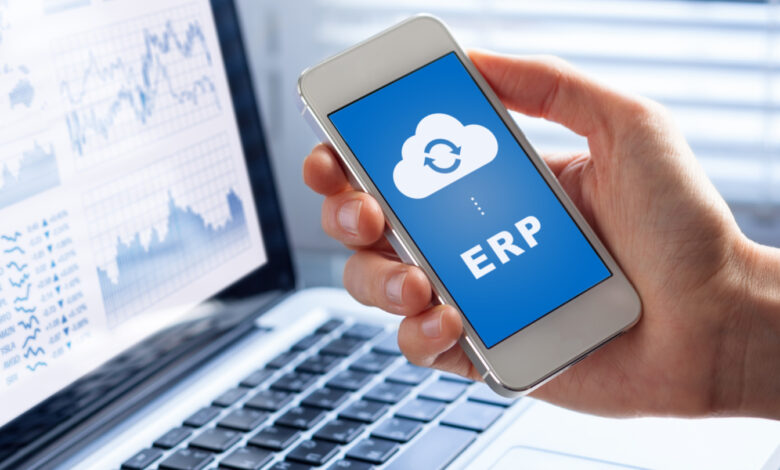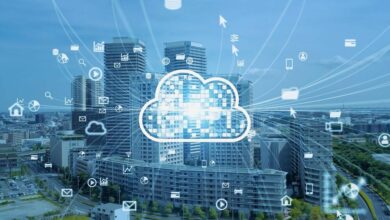4 Ways Cloud-Native ERP Solutions Differ From Cloud-Hosted Solutions

Line of business systems such as Enterprise Resource Planning are rapidly moving to the cloud. Robert Jolliffe, President of Sabre Limited, explores how cloud ERP systems, built on a cloud-native architecture, are fundamentally different from their on-premise predecessors as measured by both the technology and the functional experience.
Netsuite, Microsoft Dynamics 365, Acumenica, Odoo, and many other cloud enterprise resource planning (ERP) systems have emerged and expanded in the last decade. With the rapid growth of the cloud as the platform for end-users to use technology, there is still a lot of confusion about cloud native architecture. This has led some older ERP vendors to claim they are cloud-native when they are not.
Cloud technologies are not defined by where they are hosted or how they are billed. They are a new paradigm in design and capabilities. This new approach to technology also changes the services and consulting activities that go hand and hand with ERP. We’ll examine the cloud ERP space as a way to consider the differences between classic on-premise and cloud technologies and how they are changing behavior.
Technology Architecture: Then and Now
In 1991, I was given a pack of disks and told it was “Windows 3.0” and that I was to install it on 100 or more computers by hand. It was new to me and the end-users I supported. There was a little resistance, but we knew it was inevitable. Within 12 years, everyone ran Windows, and my company was installing XP on new computers.
Virtually every software package in the business market was a native Windows package in 2003. That was a significant change from 1991. There was an interregnum that existed for a while between that first day with my floppy disks and 12 years later. It was a time when old DOS-based software products were rapidly ported to Windows, but these “windows” products were just skin deep.
The architecture of Windows introduced shared resources like printers, save and open dialogs, and the magical clipboard. These DOS-based software products being ported to Windows did not take advantage of these features. They looked a bit like windows, but they functioned like DOS.
Learn More: Cloud Gaming Will Make Consoles Obsolete, But Will Game Developers Be Better Off?
Cloud ERP as an Example of Cloud-Native Architecture
The same thing that happened between DOS and Windows is happening between Windows and the Cloud. Cloud Architecture is to on-premise technologies what Windows was to DOS. It is a brand new way of using technology and is also much more than a new way to bill or host software.
If we look at line-of-business products as an example, virtually every ERP system today comes with “Cloud” based offerings, whether it is cloud-native or just an on-premise system disguised as cloud software. Technologies like Windows Remote Desktop or Citrix are being used to brand these systems as cloud products, with as much efficiency as DOS software running on Windows.
Many ERP vendors don’t have the depth or cash to rewrite their technology in the small to mid-market. There are many ERP vendors, ranging from tiny local ones to large tier 1 vendors (Oracle, SAP, Sage, Microsoft, etc.). Rewriting an on-premise architecture as a cloud-native technology is a considerable effort. The result is a lot of on-premise technology posing as “cloud” systems. The reality is they are cloud-hosted, not cloud-native.
Four Characteristics of Cloud-Native ERP Systems
To distinguish cloud-hosted ERP solutions from cloud-native ones, there are some common characteristics you should observe. Cloud-native ERP systems should have these (and maybe more) features:
1. Serverless Design
These technologies are serverless. The customer does not need a server, and the technology runs in a public cloud. I think the best of them have dual-use rights (so you can also choose to run them on your own infrastructure). These systems use single sign-on through Google, Microsoft, Facebook etc. Customers usually pay through a monthly subscription model, but that defines its economics, not the technology.
2. Cloud Native Technology is Device Agnostic
Any cloud-native technology is, by its nature, device agnostic. A cloud-native ERP system runs on any hardware platform and any operating system. Even Microsoft’s Dynamics 365 ERP systems (Business Central and Finance and Operations) can run on a Mac, a Chromebook, a Pixel, or Android Phone. They speak “swipe and pinch” and recognize Bluetooth printers. They have native apps in all the major app stores.
3. Cloud-Native is App Friendly
Whether it is Salesforce, Netsuite, the Microsoft Dynamics 365 product line, or any other cloud-native line-of-business system, they all support some private app store. The design of these technologies is open and easily integrated. It’s the design philosophy that exploded the use of the iPhone and buried Blackberry.
4. Rapid Deployment
Speaking as someone who spent years selling Dynamics NAV (now in the cloud as Dynamics 365 Business Central), cloud-native ERP is deployed with virtually zero effort. The onboarding effort is more limited by customers submitting payment methods than any technical element. Old ERP systems could take weeks or months to get hardware in place and software installed. Cloud-native systems can come online by the end of a phone call.
Learn More: How to Build Business Resilience With Multi-Region Cloud Desktops
The Cost of Cloud ERP Implementation
By the late 2000s, virtually all mid-sized or larger businesses had completed at least one (and often two) intense ERP implementations. Even small businesses were familiar with the process. It was well-known that these heavily customized and feature-rich training and implementation projects had a bad habit of failing spectacularly.
With the introduction of the cloud and its new economic model of low capital investment, the implementation model needed to change as well. This is especially true because ERP systems reached a much smaller demographic than in the past. Businesses as small as 15 to 20 employees are actively implementing true enterprise systems in the 2020s.
I’ve written about the benefits of a remote and agile ERP deployment methodology for the cloud. With the rapid changes brought by COVID19, this technique is now expected by almost all small and medium businesses looking at cloud-native ERP. Changing the business process to fit the ERP system rather than the opposite; reducing and managing the training process; replacing customization with native app addons; setting realistic expectations, and using online training resources and methods are major components of these changes.
Conclusion
Modern cloud-native software is built on a new and revolutionary technology platform. This new platform is as revolutionary and different as Windows was when DOS was displaced in the late 1990s. Well-known examples of cloud-native applications are ERP systems like Netsuite, Accumenica, Microsoft Dynamics 365, Oodo, and others. They exhibit the features of cloud-native solutions (like an app store, serverless architecture, single sign-on, rapid deployment, and device flexibility).
More than most other technologies, the cloud-native ERP is also introducing new ways to deploy and train users. The massive ERP projects of the past are hard to justify when the software’s capital costs have been eliminated. Some ERP companies and many classic ERP value-added resellers have been slow to adapt to this new paradigm.
Did you enjoy reading this article? Let us know your thoughts in the comment section below or on LinkedIn, Twitter, or Facebook. We would love to hear from you!


